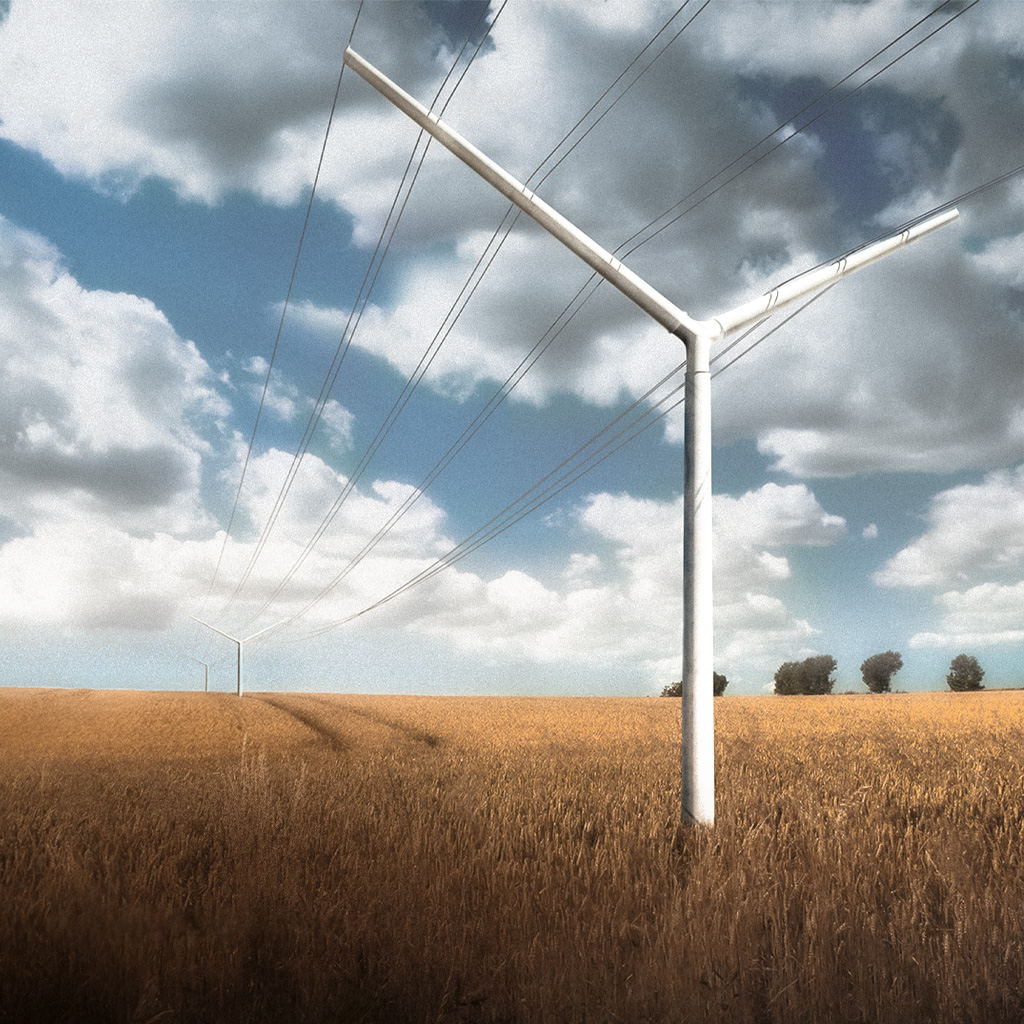Transmission towers that are smaller, quicker to install, and simply more attractive could be appearing on the scene very soon.
Time and again, transmission towers are viewed as “spoiling the landscape” and become the subject of opposition by many. And with more and more towers required to advance the energy revolution, these levels of resistance to them could even be set to increase. With the Composite Pylon, BYSTRUP is aiming to offer an alternative to conventional transmission towers whose appearance is less than attractive. For this ambitious project, the Danish design company has joined forces with Valmont SM, Nexans, Dervaux, and Power Composites (PC).
“We are delighted to be part of this exciting project. The Composite Pylon aims to make a contribution that will accelerate the expansion and conversion of power grids—something that is urgently needed to drive the energy revolution forward,” says Matthias Domm, Technical Project Manager at PC. Together, all five project partners submitted an application to the EU for a new pylon design that would blend into the landscape better. Approval was granted in November 2019 and three prototypes are now being produced.

![]() Hollow composite insulators encased in silicone form the cross-arms of the Composite Pylon developed by Reinhausen Power Composites and produced by Reinhausen France.
Hollow composite insulators encased in silicone form the cross-arms of the Composite Pylon developed by Reinhausen Power Composites and produced by Reinhausen France.
![]() Attractive, compact, and erected in next to no time — the Composite Pylon is set to drive forward the grid expansion that the energy revolution needs
Attractive, compact, and erected in next to no time — the Composite Pylon is set to drive forward the grid expansion that the energy revolution needs
![]() The pylons are designed to be erected every 360 meters and conduct 2x400 kV or more
The pylons are designed to be erected every 360 meters and conduct 2x400 kV or more
PC is responsible for the cross-arms—a key element of the pylons. These consist of hollow composite insulators encased in silicone and have a design that enables them to not only absorb the loads of the overhead line conductors and convey these to the tower, but also provide electrical insulation at the same time. This means that no additional suspension insulators are required, as they would be on conventional steel lattice towers. As a result, the Composite Pylon is considerably smaller than 56 meters.
Further benefits include the fact that the pylons are easier to maintain and quicker to install—the aim is that it should be possible to erect a pylon in one day. The pylons do not require the large foundations that conventional 400 kV towers do and are easy to transport by helicopter, meaning that it will be possible to place the pylons of the future in difficult-to-access locations. Three of the new pylons are set to be erected in Denmark for demonstration purposes in 2021. A number of operators are already considering integrating some of the first models into their existing grid in order to test them out.
YOUR CONTACT

Do you have any questions about hollow composite insulators?
Manuel Surnic is here to help:
M.Surnic@reinhausen.com
